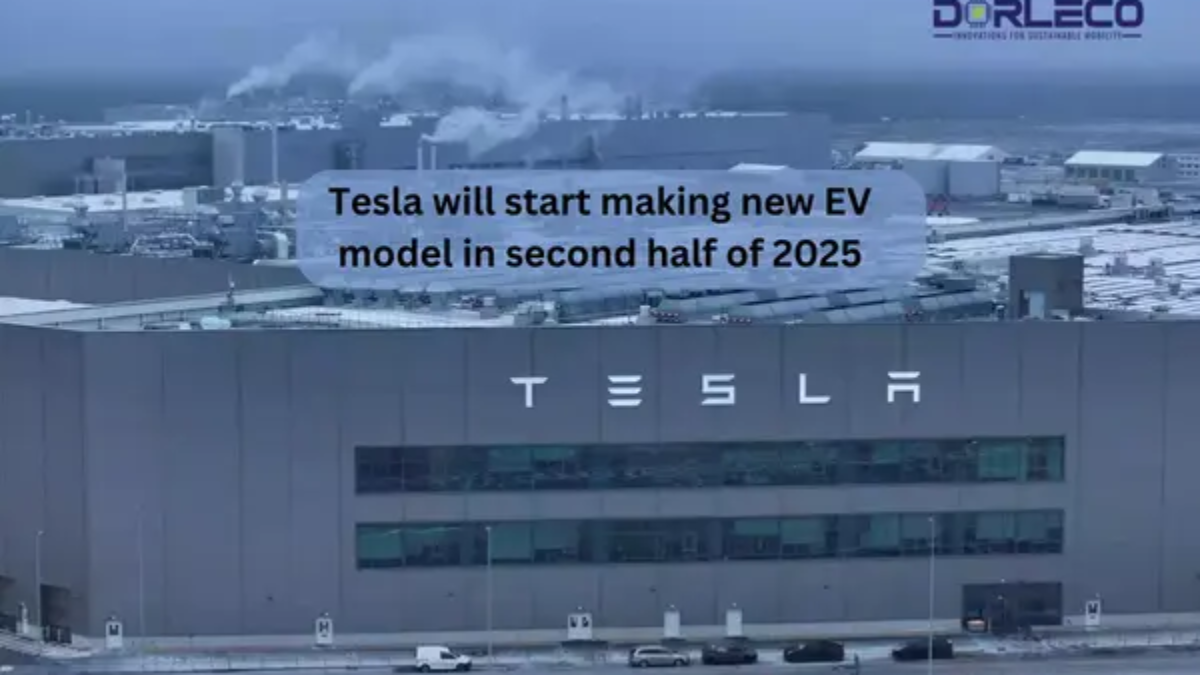The net income for the year increased by more than 100% to USD 7.9 billion, which included a noncash gain of USD 5.9 billion from deferred tax assets. Tesla noted that while decreased costs for raw materials and U.S. government credits contributed to a decrease in cost per vehicle, the manufacture of cyber trucks and other research initiatives resulted in higher costs.
Elon Musk, the CEO of Tesla, stated on Wednesday that the company plans to begin producing its highly awaited next-generation electric vehicle at its Texas plant in the second half of 2025.
However, Tesla shares fell 6.5% in premarket trade after Musk said that it would be difficult to ramp up manufacturing of the new car. Tesla also issued a warning about a significant slowdown in sales growth this year before the launch of the new model. Musk indicated that any acceleration of Tesla’s slowing rate of growth would require “a tremendous amount of new revolutionary manufacturing technology” and would take some time.
His prediction came after a Reuters report earlier in the day that claimed Tesla had instructed suppliers to get ready for the launch of a smaller crossover in June 2025. This launch is crucial for the automaker as it loses market share to more affordable EVs, such as those produced by China’s BYD.
When it comes to time, I’m usually optimistic. In a post-earnings discussion with analysts, Musk stated, “But our current schedule shows that we will start production towards the end of 2025, sometime in the second half.”
He remarked, “We’ll be sleeping on the line practically,” alluding to the Texas location of Tesla’s facility, where the new model will be initially manufactured. He said that later this year, a decision will be made on another manufacturing outside of North America and Mexico.
The maker of EVs also issued a warning, citing “notably lower” sales growth this year as a result of decreasing fourth-quarter gross margin and its focus on the new car.
According to Tesla, it is between two growth waves: the first will be fuelled by the introduction of Models 3 and Y in 2017 and 2020, respectively, and the second will begin with the next-generation vehicle platform.
Visible Alpha reports that Wall Street anticipates Tesla to sell 2.2 million cars this year. That would be up about 21% from 2023 but well below the long-term target of 50% that Musk set about three years ago. But on Wednesday, Tesla did not restate that goal.
As EV demand declines and competition heats up, Tesla is preparing for slower growth and profitability after years of explosive expansion.
According to my prediction, Musk will likely drop prices and take a portion of volume declines. Hodges Capital Management shareholder Gary Bradshaw stated that margins would struggle for some time to come.
Despite warning that it was getting close to “the natural limit of cost down of our existing vehicle line-up,” Tesla’s cost of goods sold per vehicle decreased sequentially in the fourth quarter, which increased pressure on the business to introduce its new, less expensive models. In the fourth quarter, BYD sold more EVs worldwide than Tesla.
Musk predicted that Chinese automakers will achieve great success abroad.
According to LSEG statistics, Tesla recorded a gross margin of 17.6% for the three months ended in December, down from 23.8% a year earlier and analysts’ average projection of 18.3%.
Although it improved from 16.3% in the third quarter, the automotive gross margin, excluding regulatory credits—a highly anticipated number—dropped to 17.2% from 24.3% a year earlier.
Greg Silverman, global director of brand economics at Interbrand, stated, “Today’s flat sales and significantly reduced margin results are further evidence that Tesla is losing its leadership advantage and its brand leadership has weakened.”
MORE PRICE CUTS?
Since late 2022, Tesla has drastically reduced the price of its vehicles, starting a pricing war that has forced Ford and other American competitors to hold down the manufacture of EVs.
Musk stated on Wednesday that the rate of decline in borrowing rates will determine Tesla’s profit margins.
Its stock has dropped 16% so far this year after doubling in 2023. Musk’s promise of self-driving cars has helped the business enjoy the values of a technology corporation.
Senior analyst at Investing.com Jesse Cohen stated, “I don’t think the price cuts are over, mainly for the reason that demand for its electric vehicles is still weak.”
The net income for the year increased by more than 100% to USD 7.9 billion, which included a noncash gain of USD 5.9 billion from deferred tax assets. According to Tesla, the cost-per-vehicle decreased due to lower raw material costs and U.S. government subsidies, but costs increased due to the manufacturing of Cyber trucks, AI, and other research initiatives.
According to LSEG statistics, Tesla earned 71 cents per share on an adjusted basis in the fourth quarter, falling short of the average analyst projection of 74 cents.
With a 3% increase to USD 25.17 billion in revenue during the fourth quarter, Tesla’s growth rate was the weakest in over three years. Per LSEG statistics, analysts had average expectations of USD 25.62 billion.

